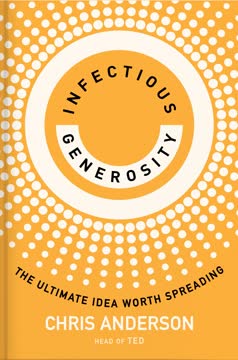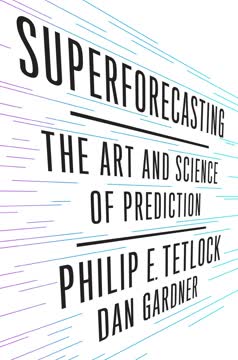Key Takeaways
1. Effective Altruism: Maximizing Impact Through Evidence-Based Giving
Effective altruism is about asking, "How can I make the biggest difference I can?" and using evidence and careful reasoning to try to find an answer.
Scientific approach to doing good. Effective altruism applies rigorous analysis to philanthropic efforts, aiming to maximize the positive impact of our actions. It challenges traditional notions of charity by focusing on measurable outcomes rather than emotional appeal.
Key principles:
- Use evidence and reason to determine the most effective ways to help others
- Consider cause prioritization, looking for the most pressing and neglected issues
- Seek out interventions with the highest cost-effectiveness
- Be willing to change course based on new information
This approach encourages individuals to think critically about their charitable giving and career choices, ensuring that their efforts to improve the world are as impactful as possible.
2. The 100x Multiplier: Your Potential to Transform Lives
For those of us living in rich countries, you should expect to be able to do at least one hundred times as much to benefit other people as you can to benefit yourself.
Vast disparity in global wealth. The extreme inequality between developed and developing countries creates an opportunity for individuals in wealthy nations to have an outsized impact on the lives of those in extreme poverty.
Examples of impact:
- $3,400 can save a life through highly effective interventions
- $100 can provide one quality-adjusted life year (QALY) in the developing world
- Donating 10% of an average US income could save dozens of lives annually
This multiplier effect means that relatively small sacrifices from those in wealthy countries can translate into enormous benefits for those in extreme poverty, providing a compelling argument for increased charitable giving and effective altruism.
3. Cost-Effectiveness: Identifying the Most Impactful Interventions
We need to ensure we're making not just a difference but the most difference we can.
Importance of comparative analysis. Effective altruism emphasizes the need to evaluate and compare different charitable interventions to identify those that provide the greatest benefit per dollar spent.
Key considerations:
- Quantifiable metrics (e.g., QALYs - Quality-Adjusted Life Years)
- Rigorous studies and randomized controlled trials
- Transparency and accountability of organizations
- Scalability and room for more funding
Examples of highly cost-effective interventions:
- Distributing insecticide-treated bed nets to prevent malaria
- Deworming programs for children in developing countries
- Direct cash transfers to extremely poor households
By focusing on the most cost-effective interventions, we can dramatically increase the positive impact of our charitable efforts.
4. Neglected Causes: Finding Overlooked Opportunities for Impact
The causes we hear the most about are precisely those where it will be harder to make a big difference; the causes that get less attention are those where we may be able to have a massive impact.
Identifying underserved areas. Effective altruism seeks out neglected causes where additional resources can have a disproportionate impact due to diminishing returns in more popular areas.
Characteristics of neglected causes:
- Receive relatively little funding or attention
- Have potential for high impact if addressed
- Often involve long-term or less visible issues
Examples of neglected causes:
- Global catastrophic risks (e.g., biosecurity, AI safety)
- Animal welfare, particularly factory farming
- Certain tropical diseases
By focusing on these overlooked areas, effective altruists can achieve greater marginal impact with their resources and efforts.
5. Career Choice: Aligning Your Work with Altruistic Goals
Choosing a career is one of the most important decisions you'll ever make, and I hope that the framework I've presented in this chapter will help you to think through this decision.
Strategic career planning. Effective altruism encourages individuals to consider how their career choices can maximize their positive impact on the world.
Key considerations:
- Personal fit: Skills, interests, and potential for excellence
- Direct impact: How much good can be done in the role itself
- Earning potential: Ability to donate significant amounts (earning to give)
- Career capital: Skills, connections, and credentials gained for future impact
Promising career paths:
- Research in high-priority cause areas
- Policy and government roles
- Entrepreneurship focused on solving important problems
- High-earning careers with a commitment to substantial donations
By thoughtfully considering career choices through an altruistic lens, individuals can dramatically increase their lifetime impact.
6. Cause Prioritization: Selecting the Most Pressing Global Issues
If we're really trying to do the most good we can, however, then we need to think carefully about cause selection.
Systematic approach to choosing causes. Effective altruism emphasizes the importance of rigorously evaluating different cause areas to identify those where additional resources can have the greatest impact.
Framework for cause prioritization:
- Scale: The magnitude of the problem and potential impact
- Neglectedness: How many resources are already dedicated to the cause
- Tractability: How easy it is to make progress on the problem
High-priority cause areas:
- Global poverty alleviation
- Reducing existential risks
- Animal welfare
- Climate change mitigation
By carefully selecting which causes to focus on, we can ensure that our efforts are directed towards the most pressing and impactful global issues.
7. Overcoming Biases: Making Rational Decisions in Altruism
We need to be careful when thinking about how to find a job you'll love. There's a lot of feel-good misinformation out there, and the real route to job satisfaction is somewhat counterintuitive.
Combating cognitive biases. Effective altruism emphasizes the importance of overcoming emotional and cognitive biases to make more rational and impactful decisions in our efforts to do good.
Common biases to avoid:
- Scope insensitivity: Failing to properly scale our emotional response to larger numbers
- Identifiable victim effect: Giving more weight to identifiable individuals over statistical lives
- Availability heuristic: Overemphasizing easily recalled or emotionally salient information
Strategies for overcoming biases:
- Rely on data and rigorous analysis rather than anecdotes
- Consider long-term and indirect effects of actions
- Seek out diverse perspectives and challenge assumptions
By consciously working to overcome these biases, we can make more rational and effective decisions in our altruistic efforts.
8. Global Poverty: A Prime Target for Effective Altruism
Because we're used to judging ourselves in comparison with our peers, it's easy to underestimate just how well off those of us in rich countries are.
Vast potential for impact. Global poverty remains one of the most promising areas for effective altruism due to the extreme disparities in wealth and the cost-effectiveness of interventions.
Key facts:
- Over 700 million people live in extreme poverty (less than $1.90 per day)
- Life-saving interventions can cost as little as a few thousand dollars
- Addressing poverty can have cascading positive effects on health, education, and economic development
Effective interventions:
- Direct cash transfers to extremely poor households
- Distribution of insecticide-treated bed nets
- Deworming programs for children
By focusing on global poverty, effective altruists can achieve an outsized impact, dramatically improving or saving lives at a relatively low cost.
9. Beyond Charity: Systemic Change and Long-Term Impact
Often the fact that you're passionate about something is a good reason why it will be difficult to find a job in that area, since you have to compete with all the other people who are passionate about the same thing.
Addressing root causes. Effective altruism encourages thinking beyond traditional charitable giving to consider systemic changes and long-term impacts that can solve problems at their source.
Approaches to systemic change:
- Policy advocacy and reform
- Scientific research in neglected areas
- Technological innovation for social good
- Improving institutional decision-making
Examples:
- Advocating for more open immigration policies
- Researching solutions to global catastrophic risks
- Developing clean energy technologies
By focusing on systemic change and long-term impact, effective altruists can potentially achieve much greater and more sustainable positive outcomes than through direct aid alone.
10. Personal Action: Implementing Effective Altruism in Your Life
Go onto the website of a highly effective charity and sign up to make a regular donation, even if it's just ten dollars per month. This is the easiest and most tangible way of having a massive immediate positive impact.
Practical steps for engagement. Effective altruism provides a framework for individuals to take concrete actions to maximize their positive impact on the world.
Key actions to consider:
- Pledge to donate a percentage of income to highly effective charities
- Critically evaluate career choices based on potential for impact
- Stay informed about the most pressing global issues and effective interventions
- Engage with the effective altruism community for support and resources
By implementing these principles in our daily lives, we can dramatically increase our positive impact on the world and contribute to solving some of humanity's most pressing challenges.
Last updated:
FAQ
What's Doing Good Better about?
- Focus on Effective Altruism: The book by William MacAskill explores effective altruism, a philosophy that combines data and reason with altruistic acts to maximize positive impact.
- Five Key Questions: It introduces five essential questions to guide effective altruism, focusing on impact, effectiveness, neglected areas, alternative outcomes, and success chances.
- Real-World Examples: MacAskill uses case studies like PlayPump and cash transfer programs to illustrate effective altruism principles and potential pitfalls of ineffective charitable actions.
Why should I read Doing Good Better?
- Transformative Perspective: The book challenges common assumptions about altruism, encouraging a more analytical approach to making a difference.
- Practical Framework: It provides a framework for evaluating charities and making decisions about resource allocation for maximum impact.
- Inspiring Call to Action: MacAskill motivates readers to consider their potential to effect change, emphasizing that even small contributions can lead to significant benefits.
What are the key takeaways of Doing Good Better?
- Effective Altruism Defined: The book defines effective altruism as using evidence and reason to determine the most effective ways to help others.
- Importance of Evidence: MacAskill stresses the need for robust evidence when evaluating charities, arguing that many initiatives may not be as effective as they seem.
- Focus on Cost-Effectiveness: The author highlights the significance of cost-effectiveness in charitable giving, urging readers to consider the impact relative to costs.
What is effective altruism as defined in Doing Good Better?
- Philosophical Approach: Effective altruism encourages using resources—time, money, and skills—to do the most good possible, combining altruistic intentions with rigorous analysis.
- Evidence and Reason: It emphasizes using evidence and reason to determine the most effective ways to help others, rather than relying on emotional appeals.
- Long-Term Impact: The focus is on long-term solutions to global problems, aiming for sustainable change rather than temporary relief.
How does Doing Good Better suggest evaluating charities?
- Five Key Questions: MacAskill introduces questions to assess charities, focusing on impact, effectiveness, and neglected areas.
- Cost-Effectiveness Analysis: The book emphasizes evaluating how much good a charity can achieve per dollar spent.
- Transparency and Evidence: It advocates for transparency in charity operations and the use of robust evidence to support claims about effectiveness.
What are the five key questions of effective altruism in Doing Good Better?
- Impact Assessment: How many people benefit, and by how much? This encourages a concrete assessment of the impact of charitable actions.
- Effectiveness Evaluation: Is this the most effective thing you can do? It pushes individuals to evaluate the best use of their resources.
- Neglected Areas: Is this area neglected? It highlights the importance of focusing on causes that receive less attention and funding.
How does Doing Good Better illustrate the pitfalls of charitable giving?
- Case Study of PlayPump: MacAskill discusses the PlayPump initiative, which failed due to practical shortcomings, illustrating the need for evidence-backed solutions.
- Community Needs: The book emphasizes understanding community needs to avoid wasted resources and unmet needs.
- Evaluating Outcomes: It stresses the need for rigorous evaluation of charitable programs to ensure they deliver intended benefits.
What is the 100x Multiplier mentioned in Doing Good Better?
- Concept Explanation: The 100x Multiplier suggests that individuals in affluent countries can do at least one hundred times more good for others than for themselves.
- Impact of Donations: It illustrates how a dollar donated to someone in extreme poverty can have a much greater impact than if spent on oneself.
- Encouragement to Act: Understanding this multiplier motivates readers to leverage their resources to help those in need.
How does Doing Good Better address ethical consumerism?
- Critique of Effectiveness: The book argues that ethical consumerism often has minimal impact compared to targeted charitable donations.
- Moral Licensing Effect: MacAskill discusses how ethical consumerism can lead to moral licensing, potentially undermining overall impact.
- Focus on Donations: It advocates for prioritizing donations to effective charities over small changes in consumer behavior.
What are some examples of effective charities mentioned in Doing Good Better?
- Against Malaria Foundation: Highlighted for its effectiveness in distributing bed nets to prevent malaria at a low cost per QALY.
- GiveDirectly: Provides cash transfers to the poor, allowing recipients to use funds as they see fit, with significant positive impacts.
- Deworm the World Initiative: Focuses on deworming programs that improve health and educational outcomes for children, demonstrating high cost-effectiveness.
What are the best quotes from Doing Good Better and what do they mean?
- “Good intentions can all too easily lead to bad outcomes.”: Emphasizes that wanting to help is not enough; effectiveness must be considered.
- “Effective altruism consists of the honest and impartial attempt to work out what’s best for the world.”: Highlights the core principle of using rational thinking and evidence in altruistic efforts.
- “The best ways of doing good are very good indeed.”: Reminds readers that highly effective methods of helping others can lead to substantial positive change.
How can I apply the principles of Doing Good Better in my own life?
- Ask the Five Key Questions: Apply these questions to your charitable actions to make informed decisions about donations.
- Consider Earning to Give: Maximize impact by pursuing high-earning careers and donating a portion of income to effective charities.
- Stay Informed and Flexible: Remain open to new evidence and adjust charitable strategies based on effectiveness and impact.
Review Summary
Reviews of Doing Good Better are generally positive, praising its thought-provoking ideas on effective altruism and evidence-based charity. Many readers found it eye-opening and life-changing, appreciating MacAskill's logical approach to maximizing charitable impact. Some critics argue the book oversimplifies complex issues or relies too heavily on quantitative measures. Despite occasional controversy, most readers recommend it as an important read for anyone interested in making a meaningful difference in the world through donations or career choices.
Similar Books









Download PDF
Download EPUB
.epub digital book format is ideal for reading ebooks on phones, tablets, and e-readers.





